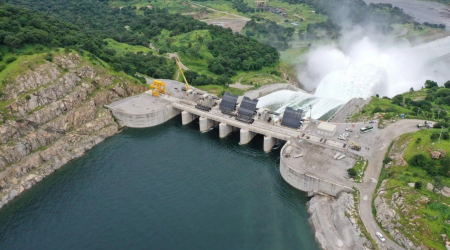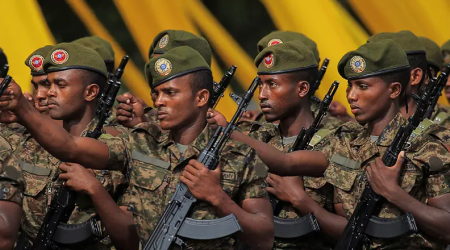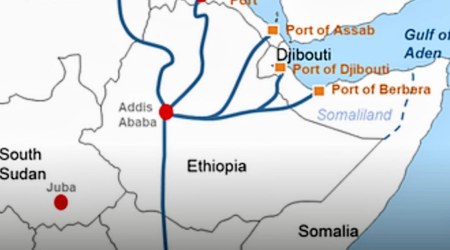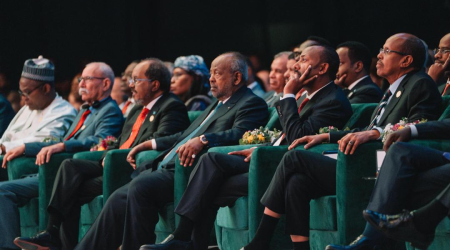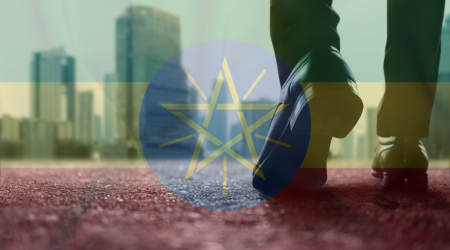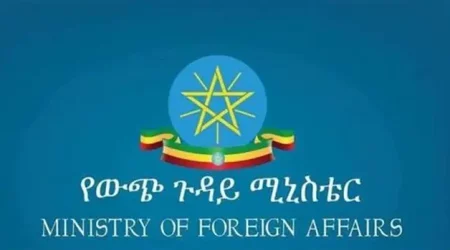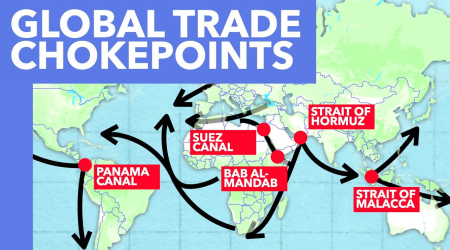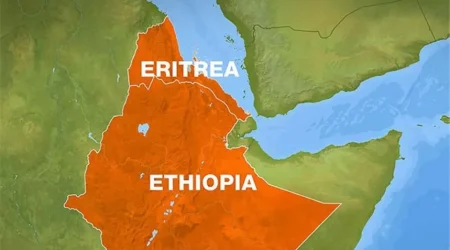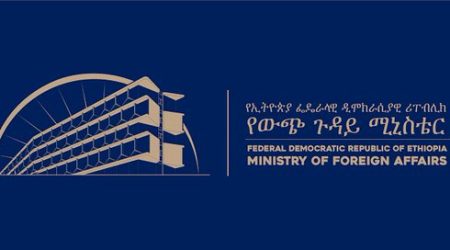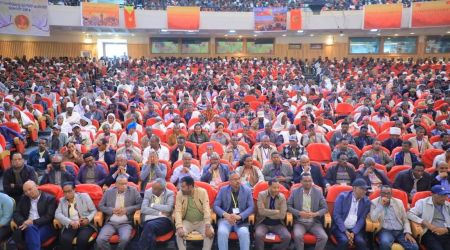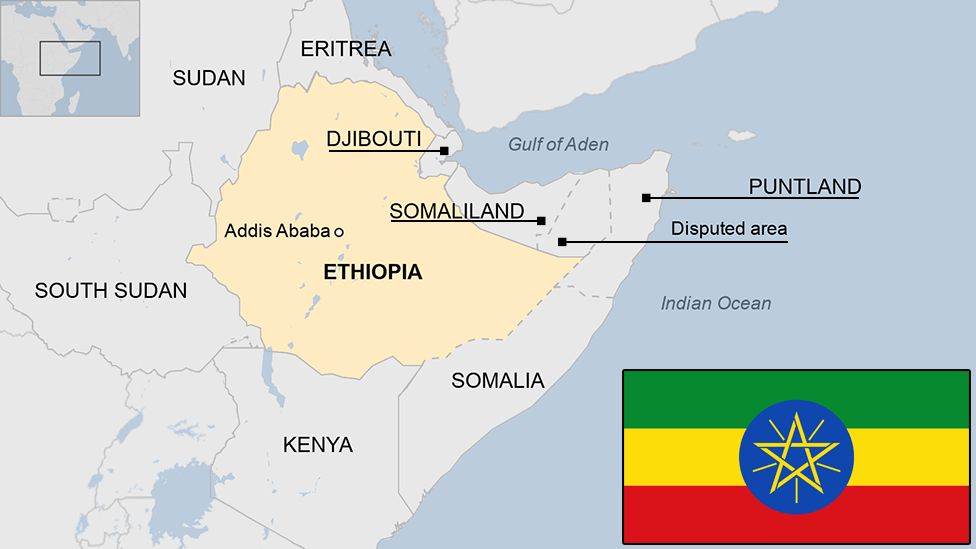
11
Oct
Ethiopia’s Political Thought Fragmentation: The Mismatch Between the Public and the Elite
Ethiopia’s political discourse is characterized by a profound fragmentation, a complex and multifaceted issue, resulting from its rich yet tumultuous historical trajectory, which includes ancient empires, colonial resistance, and modern-day ethnic federalism. Especially following the introduction of ethnic federalism in the early 1990s, the country witnessed increased political tension due to the interplay of ethnic identities, historical grievances, and economic inequalities, which has led to entrenched divisions. Ethnic federalism, initially designed to empower different ethnic groups, inadvertently deepened political fragmentation by fostering ethnocentric competition and tensions. A significant challenge in this context is also the elite-public mismatch, where the political elites’ views diverge from those of the broader public. This divide is not merely theoretical but has profound implications on governance, social cohesion, and the path towards democratic consolidation.
This scholarly exploration delves into the complex landscape of political thought in Ethiopia, focusing on the significant divergence between the political ideologies of the elite and the societal aspirations of the broader public. By situating this analysis within Ethiopia’s historical, cultural, and socio-political contexts, this essay examines the roots of fragmentation, its contemporary expressions, and the implications for democratic governance and national cohesion. It proposes avenues for reconciliation through institutional reforms, educational initiatives, and inclusive national dialogues.
Elite Narratives and Political Manipulation
Ethiopia’s political fragmentation is deeply rooted in its historical state-building processes and the complex legacy of ethnic federalism introduced after 1991. Historically, Ethiopia’s monarchs, such as Menelik II and Haile Selassie I, emphasized centralized authority, forging a unified national identity often at the expense of recognizing ethnic diversity. This centralized model sowed the seeds of discontent, particularly among marginalized ethnic groups, and set the stage for the Ethiopian Student Movement (ESM) of the 1960s, which sought to challenge systemic inequalities and advocate for social justice through Marxist-Leninist principles. The ESM played a transformative role in dismantling the feudal monarchy and inspiring radical political thought, ultimately shaping Ethiopia’s modern political trajectory.
After the 1974 revolution that overthrew Emperor Haile Selassie and gave rise to the Derg regime, many members of the movement became leaders in key political organizations, such as the Ethiopian People’s Revolutionary Party (EPRP) and the All-Ethiopia Socialist Movement (MEISON). These groups opposed the Derg regime, which had taken power following the revolution and introduced socialist policies further centralizing power, suppressing ethnic and regional identities – which sowed seeds of discontent. The movement also laid the ideological groundwork for opposition forces like the Tigray People’s Liberation Front (TPLF) and influenced the Ethiopian People’s Revolutionary Democratic Front (EPRDF), particularly its emphasis on Ethiopia’s multi-ethnic, multi-national, and multilingual identity. The ESM’s legacy is far-reaching and remains a critical point of debate in the country’s ongoing struggles with elite politics, ethnic federalism and political fragmentation.
Following the overthrow of Haile Selassie in the 1974 revolution, the Derg regime seized power, adopting socialist policies that further centralized authority and suppressed ethnic and regional identities. Members of the ESM became key players in opposition groups like the Ethiopian People’s Revolutionary Party (EPRP) and the All-Ethiopia Socialist Movement (MEISON). These movements, alongside insurgent groups such as the Tigray People’s Liberation Front (TPLF), laid the groundwork for the Ethiopian People’s Revolutionary Democratic Front (EPRDF), whose post-1991 policies would shape the nation’s future. The EPRDF’s adoption of ethnic federalism under the 1995 constitution was a response to historical grievances, aiming to recognize and accommodate the country’s ethnic diversity, rectify historical imbalances and grant the region’s autonomy. However, this system institutionalized ethnic identities within political structures, deepening ethnic cleavages and political divisions and enabling elites to leverage ethnicity for power.
The dominance of the TPLF within the EPRDF exacerbated these challenges, as elites of other ethnic groups perceived it as a marginalizing force. This resentment contributed to widespread protests preceding the political transition of 2018 and underscored the limitations of the ethnic federal model. Territorial disputes and ethnic tensions became recurring features of the system, with conflicts like the Amhara-Tigray dispute over Welkait and Raya, the Oromia-Somali clashes, and the protests against Addis Ababa’s expansion into Oromia highlighting the fraught nature of ethnic-based regionalism. Scholarly analyses of federalism (e.g., Elazar, 1987; Watts, 1999) emphasize the need for balance between accommodating diversity and maintaining unity. The EPRDF’s failure to achieve this equilibrium, compounded by the TPLF’s centralization of power, widened the gap between governance and the lived experiences of Ethiopia’s diverse populace – eventually leading to its overthrow in 2018. Under Prosperity Party, the elite’s oscillation between pan-Ethiopian unity and ethno-nationalism continues to shape the country’s political thought, reflecting the evolving political dynamics of a nation grappling with the complexities of identity, governance, and historical legacies.
Abiy Ahmed, Ethiopia’s Prime Minister since 2018, introduced the Prosperity Party in 2019, with a vision to move beyond ethnic federalism, promoting national unity, economic development, and political stability with a more centralized but inclusive political framework. Abiy aimed to balance pan-Ethiopian nationalism and ethnic federalism, preserving ethnic rights while fostering unity through development. However, Abiy’s attempts to centralize power have faced resistance from former EPRDF elites and many other ethno-nationalist elites, exacerbating ethnic tensions. The 2020 Tigray conflict and the ongoing clashes in Amhara and Oromia region revealed the fragility of his efforts in this regard and the manipulation of ethnic identities for political gain, leading to violent fragmentation. While Abiy’s regional peace and integration efforts gained international acclaim, domestic challenges, including the continued political fragmentation, suggest that his vision of cohesive national identity remains contested and evolving. The Prosperity Party’s ideology, though a departure from strict ethnic federalism, continues to struggle with Ethiopia’s complex political realities.
Elite – Public Mismatch
The role of political elites in perpetuating fragmentation is a critical aspect of Ethiopia’s political crisis. Elites, including political leaders, intellectuals, and media figures, often employ ethnicized political rhetoric to mobilize support and consolidate power. These narratives, which emphasize historical grievances, ethnic superiority, and victimhood, serve to deepen ethnic divisions. Instead of fostering unity, these elites exploit ethnic identities for political gain, creating an atmosphere of mistrust and competition among ethnic groups. For example, the TPLF, which dominated Ethiopian politics from 1991 to 2018, used the narrative of historical victimization to legitimize its rule. The TPLF capitalized on the historical suffering of the Tigray people under the Derg regime to build a narrative of ethnic solidarity and resistance. While this led to a strong sense of Tigrayan nationalism, it also alienated other ethnic groups, particularly the Oromo and Amhara, who felt sidelined in the political process. In turn, elites from these groups promoted their own narratives of historical oppression, which further fueled polarization.
Ethiopian political thought among the elite has frequently shifted between contrasting dual ideologies: Pan-Ethiopianism, which promotes national unity and a shared history, and Ethno-nationalism, which emphasizes ethnic autonomy and identity. This dichotomy extends beyond academic and political circles, shaping governance, policy, and media discourse. The public, however, often feels caught in the middle, perceiving neither narrative as fully addressing their immediate concerns, such as economic opportunities, peace, and justice. This polarization has been amplified by social media, where these contrasting narratives are both contested and reinforced. The public, on the other hand, while influenced by these narratives, tends to prioritize immediate concerns like economic stability and peace over ideological purity. With the rise of Prime Minister Abiy Ahmed to power, there was hope that Ethiopia could overcome these divisions. Abiy, hailing from the Oromo ethnic group, sought to move away from ethnic politics and promote a common national identity. However, his administration, which still is transitioning from EPRDF’s nearly 30 years legacy of ethnic politics, has also been accused of allowing elite factions to continue manipulating ethnic sentiments. In regions like Tigray, Amhara, and Oromia, strong resistance to his reforms emerged, as many elites feared losing their power in the new system. This tension ultimately led to armed conflict between regional militias and the federal government.
In contrast to the elite-driven political discourse focused on ideological battles like historical grievances, regional autonomy, and ethnic rights – the general public’s focus is on fundamental issues such as security, access to basic services (education, healthcare, infrastructure), and economic opportunities. Most citizens, particularly those in rural areas and marginalized communities, seek peace, stability, and improved living standards. However, their voices are often sidelined in elite-centered political debates that prioritize ethnic and ideological competition over practical needs. Hence the core issue of political fragmentation in Ethiopia lies in the stark contrast between the priorities of the elite and those of the public. As elites engage in political discourse that focuses on abstract issues such as historical grievances, regional autonomy, and ethnic rights, the public remains focused on practical issues that directly affect their lives. This mismatch leads to a lack of meaningful dialogue between the two groups and perpetuates feelings of alienation, contributing to the deepening divide.
To understand the disconnect between Ethiopia’s political elites and the general public, we can apply two key analytical frameworks:
A. Elite Theory: as proposed by C. Wright Mills (1956), suggests that a small group of elites often control political discourse and policy, shaping national political discourses and decisions in ways that diverge from the broader public interest. In Ethiopia, political elites, including leaders, intellectuals, and media figures, engage in ethnicized rhetoric to consolidate power, reinforcing their own positions at the expense of addressing the needs and concerns of ordinary citizens. This elite-driven agenda has played a significant role in perpetuating political fragmentation, as the elite prioritize ethnic power struggles over more pressing social and economic issues faced by the public. The elite’s often narrow focus on ethnic and regional identity politics has led to an erosion of the shared sense of national identity, which is critical for building social cohesion. Meanwhile, the general public feels increasingly disenfranchised, as their concerns are overlooked by political leaders preoccupied with securing their positions of power. The political elite’s inability to align their narratives with the public’s practical needs creates an environment of frustration, alienation, and unrest. Such public’s disillusionment with both the elite and government policies is one of the primary sources of political fragmentation, as many feel that their aspirations for a better life are ignored in favor of power struggles at the top. The 2016-2017 protests in Oromia and Amhara, driven largely by demands for political inclusion, economic opportunities, and an end to repressive policies, underscore this disconnect.
B. Fragmented Pluralism: as discussed by Dahl (1961) and Horowitz (1985), highlights a political environment where multiple ethnic groups compete for dominance, but unlike healthy pluralism, this competition leads to fragmentation rather than inclusivity. In Ethiopia, ethnic rivalries dominate political discourse, undermining national cohesion and creating divisions that often spill over into conflict. While pluralism theoretically encourages the accommodation of diverse interests, Ethiopia’s ethnic federalism, manipulated by elites, has fostered a zero-sum political game where the rise of one ethnic group is perceived as a loss for others, deepening societal rifts and hindering efforts for unity. This further deepens societal fragmentation and undermines efforts at national reconciliation. While Abiy Ahmed’s government has tried to reduce the emphasis on ethnic identity, many of his political opponents view these efforts as insufficient, with accusations of the Oromo elite seeking to dominate Ethiopian politics. This divergence becomes particularly evident on social media, where these narratives are contested and reinforced, further polarizing public opinion.
Challenges to Reconciliation
The elite-public mismatch poses several challenges to Ethiopia’s stability, democratic development, and national cohesion. The elite-public mismatch in Ethiopia presents serious challenges to the country’s political stability, economic development, and social cohesion. Political fragmentation, economic inequality, ethnic violence, and weakening democratic institutions are among its most critical consequences.
Ethiopia’s ethnic federalism, heavily influenced by identity politics since the 1960s, has deepened political fragmentation. Elites, often aligned with specific ethnic groups, prioritize narrow interests over national unity, excluding marginalized communities from meaningful decision-making. This exclusion has fueled inter-ethnic tensions and violence, particularly in Tigray, Amhara, and Oromia, where grievances remain unaddressed, and force is frequently used by ethno-nationalist elites over inclusive solutions.
Erosion of Trust & Divergent National Identities: The focus on ethnic identity by elites has undermined efforts to build a unified national identity and a sense of shared national purpose that transcends ethnic differences. Ethno nationalist political elites in the opposition, and to some extent in government, continue to resist this vision if it threatens their ethnic or political power. Ethnonationalist agendas, combined with corruption, favoritism and lack of prioritisation of public needs, have eroded public trust in political oppositions and leaders, intensifying polarization especially among Oromo, Amhara and Tigre ethnic groups – further deepening divisions and undermining the federal government’s efforts towards national reconciliation, stability and development. This disconnect is further exacerbated by exiled elites and their detachment from the everyday struggles and the values of the broader Ethiopian society.
Stagnation in Governance: Undermining Reform & Progress: Elites often resist reforms that threaten their power, stalling efforts to address structural inequalities and democratic deficits. Weak rule of law, corruption, and lack of accountability exacerbate public grievances, while policies shaped by elite interests fail to address poverty, unemployment, and regional disparities. As a result, economic inequality grows, leaving marginalized communities further alienated. This elite-public disconnect hampers Ethiopia’s ability to resolve conflicts, implement reforms, and achieve national cohesion.
The elite’s personal and power interests have been in frequent conflict with the federal government’s necessary political and institutional reforms. Efforts to address political fragmentation, such as national dialogues or constitutional amendments, often encountered resistance, even from political elites from the ruling Prosperity Party, itself who feel that reforms may undermine their power or privileges. This stagnation has prompted structural inequalities and somehow prevented meaningful progress towards a more fair, inclusive, democratic Ethiopian society.
As the elite continue to prioritize their own interests over the public’s, democratic institutions often fail to hold both political and thought leaders accountable. Weak rule of law, corruption, and a lack of transparency has limited the government from responding effectively to public grievances. Some political elites, including those in power in Tigray, Amhara, and Oromia, manipulated political structures to maintain control, sidelining public aspirations. This has to certain extent weakened the federal government’s democratisation efforts and fostered a sense of disenfranchisement among ordinary citizens, further deepening the divide between the elite and the public.
The mismatch between elite priorities and public needs often leads to policy priorities that fail to address the underlying causes of poverty or regional disparities. As a result, many Ethiopians continue to face poor infrastructure, limited access to education, and unemployment, further alienating them from political elites who are rather consumed with ethnic politics, power and autonomy. In addition, the elite often either control or vie to control economic resources and decision-making, influencing policies that favor their respective regions or ethnic groups leading to economic inequality, as the public, particularly in marginalized regions, access to reap the benefits of national economic growth is limited. Such disparity between elite’s priorities and the struggles of the general populace fuels discontent and frustration.
Pathways to Resolution
Institutional Reforms: Drawing from federalism literature, reforms must continue to distribute power more evenly across regions and ethnic groups to foster cooperation over competition. While Ethiopia’s ethnic federalism was designed to address historical grievances and grant autonomy, its execution has often resulted in fragmentation and competition rather than unity. Reforms should focus on balancing regional autonomy with national cohesion, creating institutions that encourage collaboration and inclusivity (Stepan, 1999).
Reforming Ethnic Federalism: While ethnic federalism has provided a degree of autonomy, it has also contributed to division and competition. A reform of the federal system is necessary to ensure that regional autonomy is balanced with national unity. This could involve creating mechanisms that allow for local self-governance without fostering secessionist tendencies or destabilizing national cohesion.
Strengthening State Institutions: Rebuilding and strengthening Ethiopia’s institutions is a critical step in promoting democratic governance and resolving conflicts. Independent judicial systems, electoral reforms, and anti-corruption measures are necessary to restore public trust in the government and create a fair political environment.
Educational and Civic Initiatives: Education plays a critical role in bridging the gap between elites and the public. A curriculum that emphasizes Ethiopia’s multicultural heritage, while fostering a shared national identity, can contribute to a unified political thought. Civic education should aim to promote critical thinking, help citizens navigate their country’s complex ethnic landscape, and foster a culture of peaceful and mutually respectful coexistence (Toggia, 2012).
Comprehensive National Dialogue: Reconciliation requires national dialogue that transcends ethnic lines and focuses on shared national goals. However, dialogue efforts, such as the National Dialogue Commission, have faced criticism by ethno-nationalist elites for being exclusive, with distrust between various ethnic groups making progress difficult. According to conflict resolution theories, it is essential that these dialogues obtain legitimacy by including all layers of society, especially grassroots voices, to build trust and ensure inclusive participation (Lederach, 1997).
Economic & Development Reforms: Economic policies must address the disparities that fuel ethnic-based political tensions. Inclusive economic growth can reduce the appeal of ethno nationalist rhetoric by addressing real socio-economic grievances. Abiy Ahmed’s policies and reform initiatives that promote job creation, regional development, and equitable access to resources is expected to eventually contribute to social cohesion and national stability (Collier, 2010).
Ethical and Inclusive Leadership: Ethical leadership from the political elite is necessary to bridge the elite-public gap. Leaders must prioritize the welfare of the entire population, especially marginalized groups, over ethnic or factional interests. This includes focusing on economic development, promoting national reconciliation, and fostering inclusive political processes.
Media and Information: The role of the media in bridging the elite-public gap is crucial. A media landscape free from elite control can help foster open debates, allowing diverse views to be heard and contributing to the creation of a more inclusive political thought. The media should not merely reflect elite narratives but serve as a platform for inclusive public discourse.
Efforts to Mitigate Fragmentation
Government Initiatives and the National Dialogue: Under Prime Minister Abiy Ahmed, the Ethiopian government has initiated steps such as the National Dialogue to address fragmentation. This platform aims to engage diverse political, ethnic, and civil society groups. However, challenges remain, including accusations of exclusion and a lack of transparency, as well as the ongoing security issues and ethnic violence. For the dialogue to be successful, it must be truly inclusive and address underlying structural issues, not just focus on surface-level political differences.
Elite Responsibility: The elite have a significant role in perpetuating or resolving fragmentation. By shifting away from ethnicized politics and focusing on national unity, the elite can help address structural inequalities and foster an inclusive political discourse. Ethical leadership from the political elite is essential in promoting national reconciliation and prioritizing public welfare over narrow ethnic or political interests.
Public Engagement: The public, too, must be actively involved in the reconciliation process. Grassroots initiatives, peacebuilding efforts, and civic participation are essential in promoting unity and trust. By fostering inter-ethnic cooperation at the local level and encouraging greater public involvement in political processes, communities can play a crucial role in mitigating fragmentation.
Summary:
The fragmentation of political thought in Ethiopia, characterized by the elite-public mismatch, underscores the need for a nuanced approach to governance that acknowledges and integrates Ethiopia’s diverse identities into a coherent national vision. This scholarly analysis advocates for a multi-faceted strategy involving political, educational, and economic reforms to bridge this divide, fostering a more inclusive, stable, and democratic Ethiopia. Future research could further explore the dynamics of this mismatch through comparative studies with other multi-ethnic states or through in-depth qualitative analyses of public opinion versus elite discourse.
Ethiopia’s path towards a more cohesive political thought requires acknowledging and addressing this elite-public mismatch. It necessitates a vision where political discourse is not just about maintaining power or ethnic identity but genuinely encompasses the aspirations of all Ethiopians for peace, prosperity, and justice. Moving forward, the challenge lies in creating a political environment where the elite’s thought aligns more closely with the public’s, fostering a democratic Ethiopia that thrives on its diversity rather than being divided by it.
Ethiopia’s journey towards reconciling its fragmented political thought requires a concerted effort to address the elite-public mismatch. It involves recognizing the legitimacy of diverse identities while building a national ethos that transcends ethnic boundaries. The challenge is monumental but not insurmountable. By fostering an environment where political thought is not just about power retention or ethnic identity but about the holistic development of all Ethiopians, there lies hope for a more unified, democratic, and prosperous Ethiopia. This vision demands courage from its leaders, inclusivity in its governance, and a shared commitment to peace and progress among its people.
Ethiopia’s political thought fragmentation is driven by a complex mix of historical, structural, and socioeconomic factors. The mismatch between elite-driven political narratives and the public’s aspirations for peace, stability, and development is a central challenge to national unity. Bridging this gap requires a multifaceted approach, including inclusive dialogue, political reforms, and addressing economic inequalities. By prioritizing shared national interests over divisive politics, Ethiopia can mitigate fragmentation and build a more unified, prosperous future.
The political fragmentation Ethiopia faces is deeply rooted in the country’s complex history, ethnic divisions, and economic disparities. Bridging the gap between the political elite and the general public is essential for fostering national unity and stability. While efforts have been made by the government to address these issues, much work remains. It is imperative that the government, the political elite, and the public work together to create an inclusive, equitable society that can overcome its divisions and build a shared future. By prioritizing the needs of the people, fostering inter-ethnic dialogue, and ensuring inclusive governance, Ethiopia has the potential to overcome its political fragmentation and achieve lasting peace and development.
Ethiopia’s journey through political fragmentation is a complex interplay of historical legacies, ethnic identities, elite politics, and economic realities. While ethnic federalism aimed at inclusivity, its execution has often led to exclusion and conflict. Moving forward, Ethiopia must navigate these challenges by fostering an inclusive political dialogue, ensuring equitable economic development, and rethinking political structures to prevent the exploitation of ethnic identities for political gain. The lessons from Ethiopia’s context offer valuable insights for other multi-ethnic states grappling with similar issues of national cohesion.
Ethiopia’s political fragmentation is a complex issue rooted in historical grievances, economic inequalities, and elite manipulation of ethnic identities. The mismatch between the political elite and the public, with its focus on identity politics versus practical concerns, exacerbates this fragmentation. Addressing the issue requires comprehensive reforms, including an inclusive National Dialogue, economic restructuring to reduce regional disparities, and a shift away from ethnic politics toward national unity. By aligning elite narratives with the aspirations of the public, Ethiopia can begin the difficult task of bridging the gap and overcoming the political fragmentation that threatens its future stability.
By Horn Review Editorial

